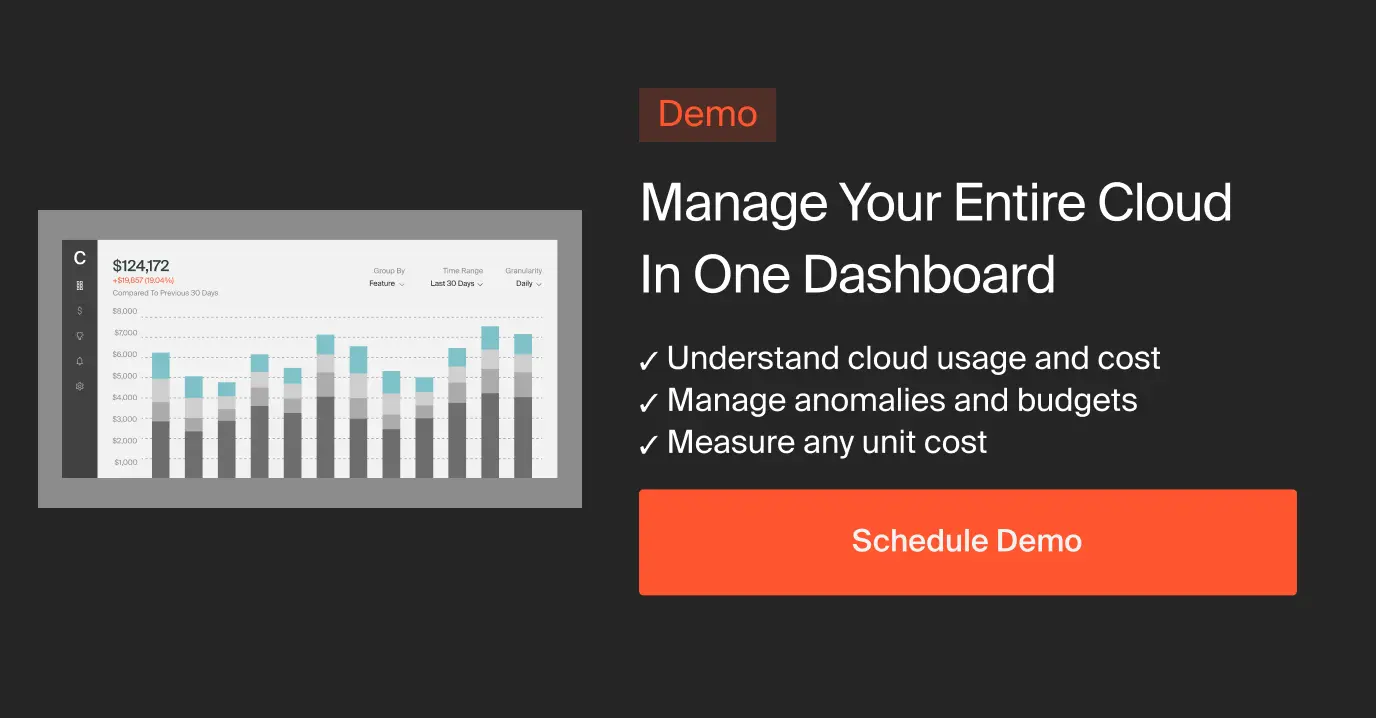As the leader of a SaaS company, you’re just as busy as you are concerned with making sure your bottom line is as healthy as possible. There’s no denying that putting some aspects of cloud cost management on autopilot is a useful strategy.
Most automated cost optimization platforms — one of our favorites is ProsperOps — use advanced algorithms to identify areas where you can find provider discounts or lower-cost alternatives to the resources you’re using now. This is an incredibly helpful approach because it immediately shaves costs off the top of your monthly cloud bill.
However, you can’t stop there if you want to truly maximize your cost efficiency and keep your business humming along in the green even when times get tough.
To achieve real results, you must dive deeply into your unit costs and use the information you find there to govern your future decisions. No automated platform can make these strategic decisions for you, but the effort required will pay off many times over in the long run.
Why You Need To Track Unit Costs — Not Just Rely On Automatic Cost Optimization
We’ve written extensively about some of the nuances that go into unit cost management and how it can form a strong basis for engineering-led optimization. If you’re new to these concepts, it comes down to one main principle:
SaaS companies need to build better, with smart engineering choices, rather than simply buying better by finding discounts.
If you’ve been focused solely on the latter, you’re likely leaving a significant amount of money on the table.
That’s because many SaaS companies waste thousands of dollars (if not more) every hour on wasted resources and other build inefficiencies.
If just a handful of resources sit idle, or just one product creates unnecessary cost bloat, the company will have to pay for those inefficiencies every single month, forever — or until those problems are identified and corrected.
Tracking unit costs is the key to identifying those inefficiencies before they snowball and cost your company millions.
For our purposes here, unit costs refer to the price you’ll pay for any individual unit within your business. You can monitor your costs per customer, per resource, per geographic region, per product, per feature, or whichever other categories make the most sense for your business.
What kind of savings are we talking about?
One CloudZero customer began using our platform to track the unit costs of every single resource their company used.
This customer was shocked to learn that a single S3 bucket cost $10,000 every single week — and that S3 bucket wasn’t even being used. They shut down that resource immediately and saved their company $52,000 per year with the click of a few buttons. Try finding equivalent savings just by discount shopping alone!
Remember, these savings came from fixing one single inefficiency within the customer’s system.
If you identify multiple areas that need improvement, your total savings from building better could be orders of magnitude larger. And the only way you can identify those areas of inefficiency is if you’re keeping a close eye on per-unit cost metrics.
You can use unit costs to inform other business decisions as well
It’s not all about slashing costs. Sometimes, you can make savvy choices that widen your margins without letting go of anything at all.
Let’s say you track your costs per customer and realize that one extremely heavy user contributes to a huge chunk of your monthly costs. The problem is that “resource whale” subscribes to one of your lower service tiers, so the revenue they bring in is far outweighed by the costs they generate.
Once you notice this problem, there are a few ways you can fix it.
You could restructure your pricing tiers to cover the costs of resource-heavy operations or simply have a discussion with that client about how it will be necessary to move them to a higher price tier in the future (or at contract renewal).
The conversation doesn’t need to be a difficult one, because you’ll have the hard data on hand to support your decision.
The information you glean from tracking per-unit cost metrics can be applied to almost any area where major business decisions must be made.
You could determine which products and features generate the most revenue for the least costs, for example, and model future releases on the same formula. You can even use your unit costs to build a forecast of your company’s financial future and then circle right around and use that prediction to help you commit to provider discounts and other savings plans.
In short, the sky is truly the limit when it comes to using unit costs to make positive changes to your bottom line.
CloudZero Provides A Window Into Your Unit Costs
The reason most companies don’t track unit costs, despite them being so incredibly useful, is because it’s a difficult thing to accomplish if you don’t have the right platform.
That’s why CloudZero focuses on helping SaaS companies just like yours dig deeply into your cloud cost data.
With our intuitive cloud cost intelligence platform — and our team of experts on standby, ready to help — you can break your costs down into any unit you wish to track and start identifying areas for improvement right away.
Schedule a demo today to see CloudZero in action!







